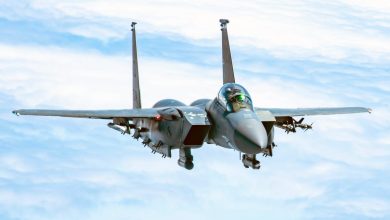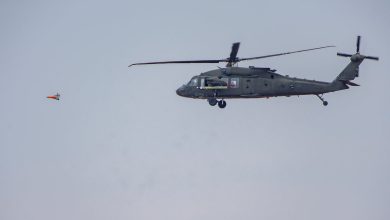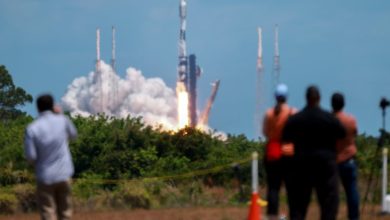Army’s successful hypersonic missile test puts fielding on horizon

HUNTSVILLE, Ala. — The U.S. Army has deemed a first complete, end-to-end flight test of its hypersonic missile a success, which puts the initial fielding to the first unit closer on the horizon, Lt. Gen. Robert Rasch, Rapid Capabilities and Critical Technologies Office director, told Defense News at the Space and Missile Defense Symposium.
“We’re really close,” Rasch said. “I’m super proud of the team because this is an important capability,”
But he cautioned that more testing remains before any decision is made on the future of its ground-launched hypersonic missile.
“We’ve got to make sure this capability works. If the decision is made to implement this, it’s for real, serious reasons, strategic-level reasons and we need it to work every time,” Rasch said.
The first flight test of the industry-manufactured missile — which took place at the Pacific Missile Range Facility in Hawaii in May — was highly anticipated as part of a joint development program between the U.S. Navy and Army following a series of failed or aborted tests of the Common Hypersonic Glide Body.
Hypersonic weapons are capable of flying faster than Mach 5 — or more than 3,836 miles per hour — and can maneuver between varying altitudes, making them difficult to detect. The C-HGB is made up of the weapon’s warhead, guidance system, cabling and thermal protection shield.
The U.S. is in a race to field the capability and develop systems to defend against hypersonic missiles. China and Russia are actively developing and testing hypersonic weapons.
Missile development programs typically take about 10 years, Rasch stressed, and while the plan to field hypersonic missiles to a first unit has been delayed by over a year, the Long-Range Hypersonic Weapon program is only at the five-year mark.
The Army has worked with Leidos’ Dynetics for years to build the industrial base for the Common Hypersonic Glide Body that will be used by both the ground service and the Navy, as the domestic private sector has never built a hypersonic weapon.
The service also separately produced launchers, trucks, trailers and the battle operations center necessary to put together the first weapon battery. Lockheed Martin is the weapon system integrator for the Army’s hypersonic capability that will be launched from a mobile truck.
The Army completed its delivery of the first hypersonic weapon capability — minus the all-up rounds — to the I Corps’ 5th Battalion, 3rd Field Artillery Regiment, 17th Field Artillery Brigade unit at Joint Base Lewis-McChord in Washington state two days ahead of its end-of-fiscal 2021 fielding deadline.
The original plan was to train on the equipment and receive those rounds in the fall of 2023, but based on a series of failed or aborted tests, that timeline has slid further down the road.
The Army and Navy last year had to abort flight tests in March, October and November due to challenges at the range related not to the round but the process of firing up the missile for launch.
While Rasch could not provide details on the timing of forthcoming decisions for the program, he said, “We’re leaning forward wherever we can to make sure that as soon as we’re done with our testing, this capability will be in the hands of the soldier.”
Jen Judson is an award-winning journalist covering land warfare for Defense News. She has also worked for Politico and Inside Defense. She holds a Master of Science degree in journalism from Boston University and a Bachelor of Arts degree from Kenyon College.







